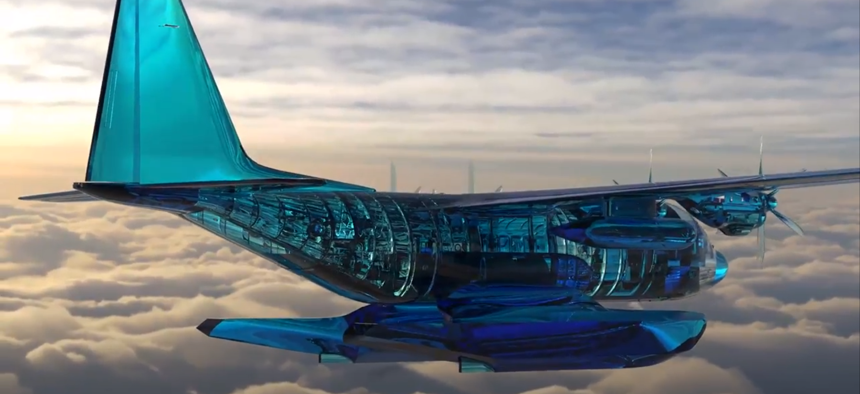TARA COPP

The U.S. Air Force is working on detachable pontoons and other modifications for its MC-130J Commando II that could enable special forces to rely less on land-based runways in future conflicts, the service said Monday.
The Commando II will be outfitted with a “removable amphibious float modification” to allow water-based operations—either inserting forces or extracting them or even delivering supplies, including fuel.
For the last several years the Air Force, Marine Corps, Army, and Navy have looked at how to modify their footprint in the Pacific to be able to absorb and respond to an attack. The services have looked at dispersing forces from large, vulnerable airfields and military bases in Japan to small island-based airfields throughout the region, but those airstrips would still be vulnerable.
A modified Commando II or other aircraft that are not reliant on land-based runways “will allow for the dispersal of assets within a Joint Operations Area," said Maj. Kristen Cepak, the Technology Transition Branch Chief for Air Force Special Operations Command. "This diaspora complicates targeting of the aircraft by our adversaries and limits aircraft vulnerability at fixed locations."
The removable pontoons are being digitally engineered by the Air Force Research Laboratory and the first test aircraft is expected to fly before the end of 2022, said AFSOC commander Lt. Gen. Jim Slife.
Slife talked about the MC-130 conversion at a reporter roundtable Monday at the Air Force Association’s Air, Space, and Cyber Conference.
“When you think about things like logistics, resupply, personnel recovery, aquatic infiltration, and exfiltration, those types of things all kind of call for an ability to operate in an amphibious fashion,” Slife said.
The design may also be used on AFSOC’s other aircraft, including its AC-130J Ghostrider gunship.
Slife said the Air Force had not decided whether this modification would be added to the whole fleet of C-130s or just some of them.
No comments:
Post a Comment